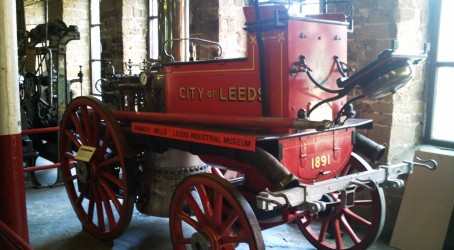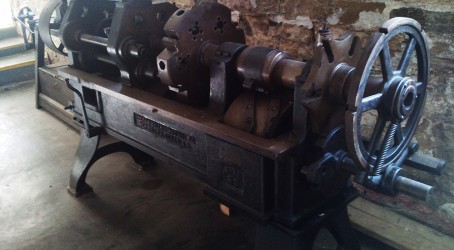Museums
A stroll through the Leeds Industrial Museum acts as a vivid reminder of the hugely important role the city had in the economic growth of the nation in the 19th and 20th centuries.
Leeds was home to a host of thriving industries, with many thousands of workers employed making goods such as textiles, machine tools and locomotives. Elements of all these activities are contained within the museum at Armley Mills, which once stood proud as the largest woollen mill in the world.
So what’s to see? Well, perhaps the most imposing exhibit is the first you see – an enormous spinning mule, the earliest automatic machine capable of handling fine woollen yarn.
This is a piece of engineering majesty in itself. From the condenser of the carding machine the unconsolidated yarn was transferred to the mule. The bobbins carrying the yarn were placed at the front of the machine and the yarn was then passed through the rollers and attached to the spindles on their carriage. The threads were twisted and drawn by the movement of the carriage away from the bobbins, with the spindles revolving. Twist was imparted to the yarn by allowing it to slip over the top of the spindles. The final process was known as winding-on. The carriages returned at the same time as the spindles rotated in the opposite direction, winding the spun yarn onto the cones.
Next up there’s a beautiful horizontal tandem Corliss compound condensing machine of about 100hp, lovingly restored to working order by museum staff. The machine was built by Woodhouse and Mitchell of Brighouse in 1887 and was a very popular model in the Yorkshire textile industry.
Leeds was also an important centre for the production of machine tools, and the industry is well-represented in terms of displays. Visitors are treated to the sorts of wheel turning, centre and capstan lathes, shaping, slotting, milling and drilling machines that would have been used in a typical machine shop of the First World War.
Other rooms house locomotives from famous Leeds firms such as Hunslet, John Fowler and Greenwood and Batley, and early fire engines.
Each display is interesting in its own right. But the museum fails to pull them all together to give a coherent timeline of Leeds’ industrial past. Indeed, many exhibits are shunted away in draughty stores with little or no descriptive information.
That’s a shame. But don’t let that stop you from paying a visit. There’s still enough to fill half a day here.

